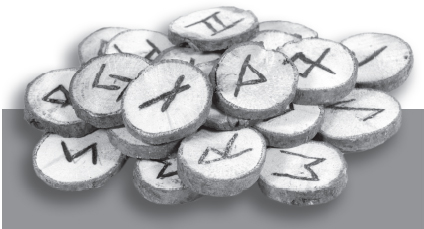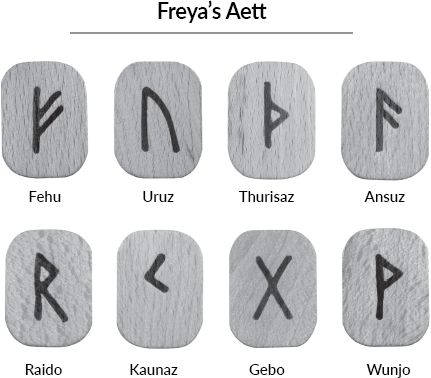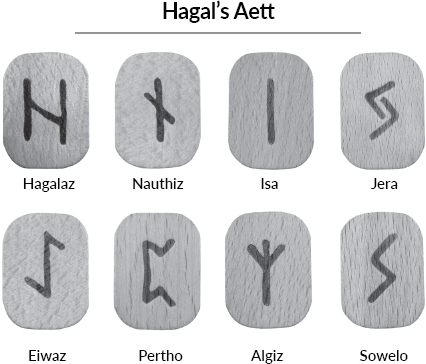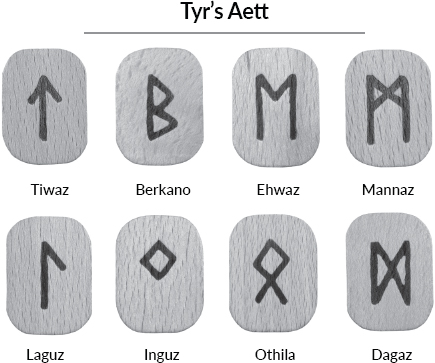

There are three Aettir (Aettir is the plural of Aett). One of the functions of each Aett is to act as part of an initiatory structure, each Aett being one degree in a three-degree initiation system. Initiation systems are a method of moving from one level of competence, knowledge, or skill to the next. The same idea exists in the study and application of magic, the kabbalah, freemasonry, religion, or any other system that has a recognized promotion ladder that is based on knowledge and skill.
The Aettir also reflect the ancient societal divisions of nurturer, warrior, and priest/king. The divisions are reflected in the Aettir of the runes in different ways. There is overlap in the duties of the runes and each Aett has its complement of functions and its own character.



Each Aett ends with a rune of positive nature and greater scope. Each Aett contains certain runes that cover similar concepts. For example each has a rune for light, as in Kanauz the torch, Sowelo the sun, and Dagaz the day. The light becomes greater in power as we progress through the Aettir. Similarly, each Aett also has a rune referring to wealth, as in Fehu, Nauthiz, and Othila. Each Aett has a different emphasis. Freya's Aett has four runes of danger, evil, or cost (Uruz, Thurisaz, Raido, and Gebo). Hagal's Aett has three (Nauthiz, Isa, and Pertho), and Tyr's Aett only one (Laguz, the dangerous sea). Each Aett has at least one rune of protection, one that is useful as a good luck charm, and one that is used in healing magic.
Each Aett has its own concerns. Freya's Aett is concerned with love, happiness, and enjoyment. Hagal's Aett is concerned with matters of achievement, power, and success, Tyr's Aett is concerned with justice, order, and spiritual advancement. The runes progress from personal and emotional concerns of love and pleasure, through worldly concerns of battle and achievement, to spiritual concerns of justice and godliness.
Some people choose to give different meanings to a rune that falls in a reversed position. However, not all of the runes can be read in the reversed position, so some rune users maintain that, although each rune may contain a negative form, its positive or negative energy is derived from its position among surrounding runes. In the following section the meanings are given for the negative form of each rune and I leave it up to you whether you chose to read reversed runes differently or not.
It is not traditional to use a blank rune although many commercially produced sets do include one. If you decide to include this in your set, you can consider its appearance as a kind of fated event, or something that is beyond the questioner's control for good or ill. The closest approximation to this is the Wheel of Fortune in the Tarot, which simply indicates that some kind of change is about to take place, but whether this is for good or ill depends upon the rest of the reading. In the case of the runes, a blank rune indicates a feeling is that fate, destiny, karma, or the uncontrollable force of Wyrd, the goddess of praise and punishment, is at hand.